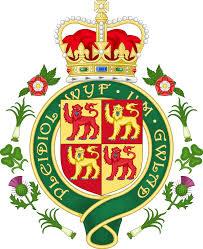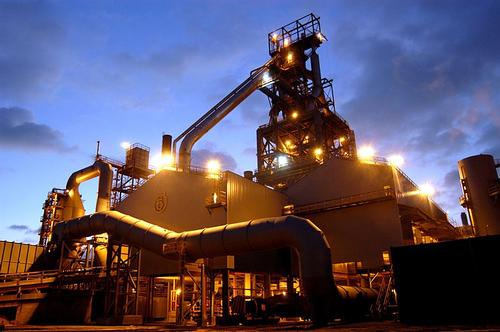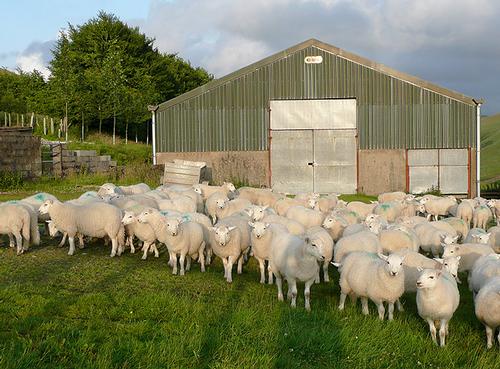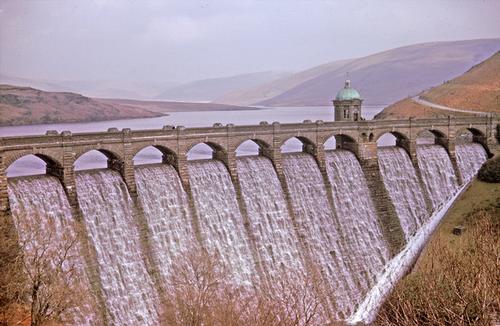WALES
Economy

Economy
Cities in WALES
| Cardiff |
Popular destinations UNITED KINGDOM
| England | Northern ireland | Scotland |
| Wales |
Economy
Mining and industry
For years, coal mining and the iron and steel industry have been the pillars of the economy. In 1920, some 300,000 people were still working in the coal mines mainly in South Wales and around Wrexham. In 1971 there were still 120,000 people working in the coal and steel sector, now there are only about 20,000. Of the 450 mines that existed around 1900, only a few remain that employ about 2000 people. The number of steel mills has decreased from 63 in 1973 to about ten today. The slate industry was at its peak at the end of the 19th century, but has now practically disappeared.
 Steel Industry, WalesPhoto: Public domain
Steel Industry, WalesPhoto: Public domain
Especially after 1945 other industries were established in Wales, such as plastics, light machinery and clothing industry; important products are also plastics, engine parts and chemical products; (micro) electronic industry was established in the 1950s. South Wales, with cities such as Newport, Cardiff, Swansea, Llanwern and Port Talbot, is the main industrial area.
This is where the recession hit hardest in the 1970s; many factories were closed and the unemployment rate in Wales, at over 15% of the labor force, was above the national average. In the north, once an important coal area, many mines are closed; the steel industry in Deeside was closed.
Welsh Development Agency
The Welsh Development Agency and the Development Board for Rural Wales were established in the mid-1970s; in particular, the creation of industrial estates, the improvement of road and rail connections and the granting of subsidies, in particular to villages and towns in the former mining areas, sought to promote employment.
This has attracted a large number of modern companies, including foreign ones (in particular Japanese and South Korean), which has increased activity and boosted employment significantly. Electrical, electronic and assembly companies in particular settled in the valleys of South Wales.
Agriculture and animal husbandry
 Sheep farm, WalesPhoto: Roger Kidd CC 2.0 Generic no changes made
Sheep farm, WalesPhoto: Roger Kidd CC 2.0 Generic no changes made
Eighty percent of the territory is used for agricultural purposes, but only one fifth of it is suitable for intensive renovation, particularly along the coast and in the border area with England. Pembrokeshire in the South West is also known as the "Garden of Wales".
The endless hills of Mid Wales and the rugged mountain regions of North Wales have many cattle, pig and especially sheep farms (approx. 7 million sheep), which provide a lot of milk, meat, wool.
Sheep farming has suffered serious damage from the fallout from the Chernobyl nuclear disaster, but more than half of the 30,000 farms still keep sheep. The most common varieties are: Welsh Mountain Bred, Beulah Speckled Face, Half Bred and Lanwenog.
Various sectors
 Craigh Gogh Dam in the Ewan ValleyPhoto: William Matthews CC 2.0 Generic no changes made
Craigh Gogh Dam in the Ewan ValleyPhoto: William Matthews CC 2.0 Generic no changes made
The services sector offers the most employment. The energy companies (gas and electricity) are also important. Large dams (Claerwen and Elan Valley) have been constructed in Mid Wales to generate electricity.
The main ports are Holyhead and Fishguard with ferry services to Ireland, and Port Talbot, Swansea, Burry, Cardiff and Newport for iron ore and petroleum imports.
Milford Haven, on the southwestern tip, is an important center for the supply and processing of petroleum.
Sources
Beeftink, A. / Zuid-Engeland en Wales
Van Reemst
Berkien, G. / Wales
Kosmos-Z&K
Berkien, G. / Wales
Kosmos-Z&K
Danse, W. / Midden-Engeland en Wales
ANWB
Fröhlich, D. / Wales
Deltas
Hendriksen, B. / Wales
Van Reemst
Hestler, A. / Wales
Marshall Cavendish
King, J. / Wales
Lonely Planet
Westphal, U. / Wales
Van Reemst
CIA - World Factbook
BBC - Country Profiles
Last updated November 2025Copyright: Team The World of Info